
In various engineering fields, studying acoustic reflection and absorption is an important point of consideration. Simulation is a valuable tool for performing such analyses, helping to better explain how sound waves interact with their surrounding surfaces. Today, we’ll look at how the Application Builder is extending the reach of such simulation capabilities by using the example of acoustic reflections off a water-sediment interface.
Acoustic Reflections at Surfaces: A Point of Focus in Many Engineering Disciplines
When driving into work in the morning, many of you may tune into a local radio station to get caught up on the latest news. Or, for those of you who take public transit, your attention may be geared toward listening to announcements for the arrival of the next train or bus. The modes of transportation may vary, but there is a shared characteristic between the sounds that you hear in both cases: They are influenced not only by the design of the sound systems, but also by how the acoustic waves interact with surrounding surfaces.
Just as light waves can reflect off a surface, sound waves can also exhibit the same behavior. The degree to which waves are reflected and the amount of absorption and attenuation of the reflected waves depends on the material, construction, and shape of the various surfaces with which they come into contact. These acoustic reflections are an important point of analysis in various engineering disciplines (i.e., soundproofing, room acoustics, and SONAR applications). Understanding the reflections offers insight into how to further optimize the technology based on its surrounding environment.
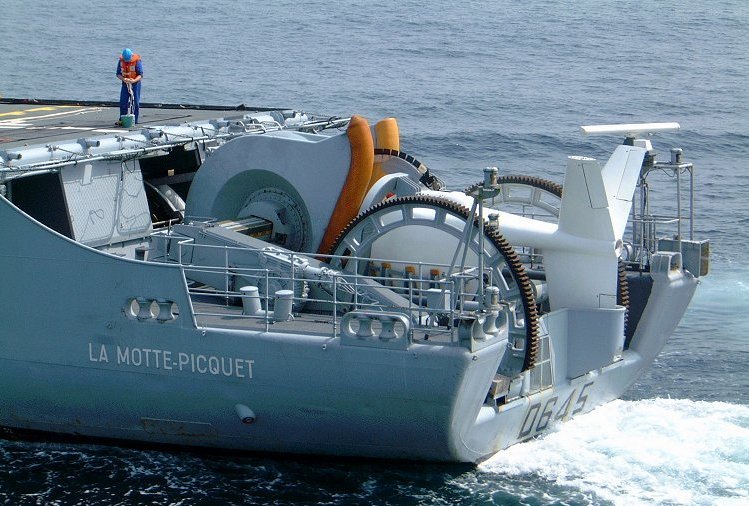
How SONAR technology, like that shown above, performs is influenced by its acoustic reflections off surrounding surfaces. Image by Jean-Michel Roche. Licensed under CC BY-SA 3.0, via Wikimedia Commons.
Take SONAR technology, for instance, which is one of many underwater acoustics applications. Using sound propagation, this technology helps to enable the detection of objects that are underwater as well as facilitate communications with other vessels. To better understand reflection phenomena, and thus advance and optimize such techniques, you can analyze the acoustic properties at the bottom of the measured or scanned body of water. COMSOL Multiphysics provides you with the tools to do so.
Studying Acoustic Reflections Off a Water-Sediment Interface
In the Application Gallery, you will find a 2D model designed to calculate the reflection coefficient of acoustic waves off a water-sediment surface. In this case, plane homogenous waves are incident from a fluid domain (water), which we model using the classical pressure acoustics that solve the Helmholtz equation. These waves are then reflected and transmitted at a water-sediment interface. To model the sediment domain, we apply Biot’s theory, which solves for the pressure and displacement field of the porous matrix.
As the figure below highlights, Floquet periodic conditions (also known as Bloch conditions) are applied on the acoustic and porous domains. The sizes of the domains are set to depend on the wavelength in the water — in other words, the frequency. Perfectly matched layers (PMLs), meanwhile, are used to truncate the computational domain for the fluid and porous domains.
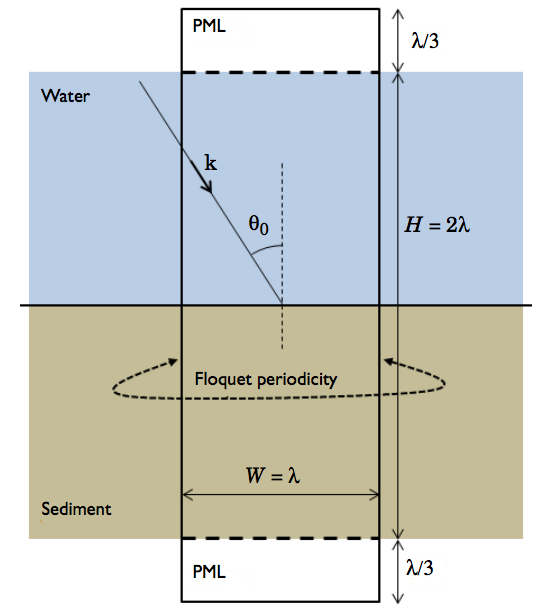
A sketch of the water-sediment system.
With this model in place, it is possible to plot the reflection and absorption coefficients for various combinations of the angle of incidence and frequency. The first plot below, for instance, showcases the reflection coefficient as a function of the angle of incidence for different frequencies. The second plot shows the reflection coefficient as a function of frequency for different angles of incidence.
Plots illustrating the reflection coefficient as compared to the angle of incidence (left) and as compared to the driving frequency (right).
Now, imagine if you could make the underlying physics of this model available in an easy-to-use computational tool that could be used by those with little knowledge of the simulation world. The Application Builder, as we’ll demonstrate next, enables such possibilities.
Simulation Apps Offer an Intuitive Approach to Analyzing Acoustic Reflections
The Acoustic Reflection Analyzer for a Water-Sediment Interface is based on the previously discussed model, hiding its underlying complexity in a simplified and intuitive interface (shown below). The example that we present here is meant to inspire you in your own app-building processes, tailoring your app’s design to include those elements that are key to your particular analysis.
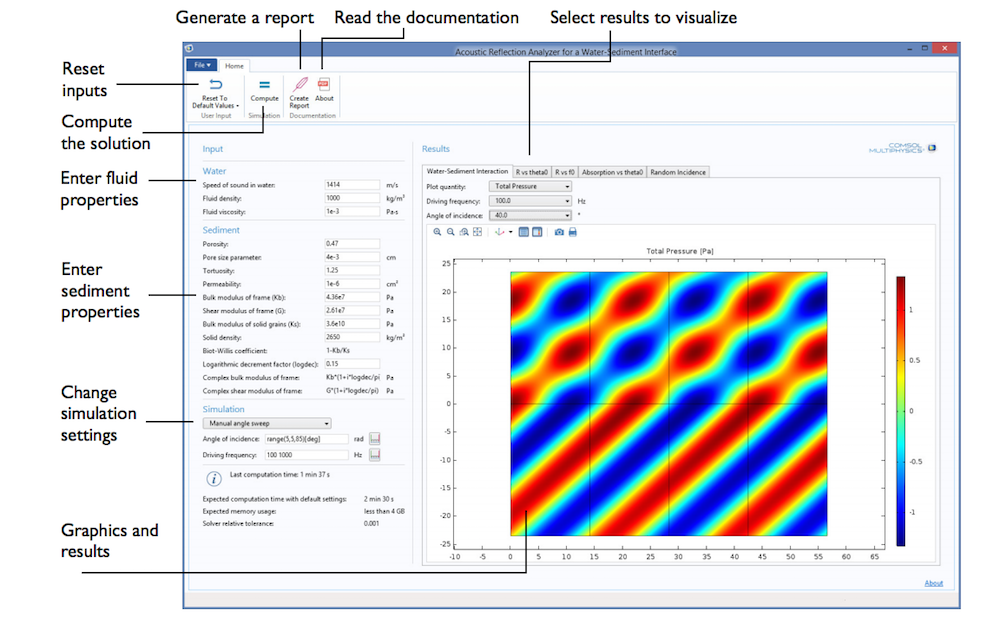
The user interface (UI) for the Acoustic Reflection Analyzer for a Water-Sediment Interface.
As you can see, the app features a series of input parameters that let users easily modify the material properties of the water and the sediment. For the fluid domain (water), such properties include the speed of sound in the fluid, fluid density, and fluid viscosity. For the porous material (sediment), the porosity, pore size parameter, and permeability can also be adjusted, among other properties. By selecting the Reset to Default Values button in the ribbon, users can easily revert the input parameters back to their original settings and start fresh in their simulation studies.
When it comes to the frequencies and angles of incidence to simulate, this can be easily specified in the Simulation section. Manual angle sweep options enable the selection of specific angles of incidence for the incident pressure wave, while the Complete angle sweep options model the given amount of angles that are between normal incidence (0°) and gracing incidence (90°). App users can also choose the Driving frequencies at which the simulation is conducted.
Looking to the right side of the app’s interface, you’ll find the Results section. Here, there are five different tabs that include a series of simulation plots:
- Water-Sediment Interaction: reflected pressure, incident pressure, total pressure, or displacement in the porous matrix for the specified driving frequency and angle of incidence
- R vs theta0: absolute value of the reflection coefficient as a function of the angle of incidence
- R vs f0: absolute value of the reflection coefficient as a function of the driving frequency
- Absorption vs theta0: absolute value of the absorption coefficient as a function of the angle of incidence
- Random Incidence: random incidence absorption coefficient for each selected frequency (this is an extension of the underlying model)
With the Application Builder, you are offered the best of both worlds — a tool that can incorporate complex physics into a user-friendly configuration. It is our hope that the app presented here, as well as the other examples available in our Application Gallery, will encourage you to begin creating apps of your own and experience the many ways in which they can optimize your design workflow.
Find Further Inspiration and Resources to Design Apps for Your Acoustic Analyses
- Download the Acoustic Reflection Analyzer for a Water-Sediment Interface demo app
- Our Application Gallery features a number of other demo apps pertaining to acoustics. Browse some additional examples:
- Watch this video for a quick introduction on how to turn your COMSOL Multiphysics models into simulation apps


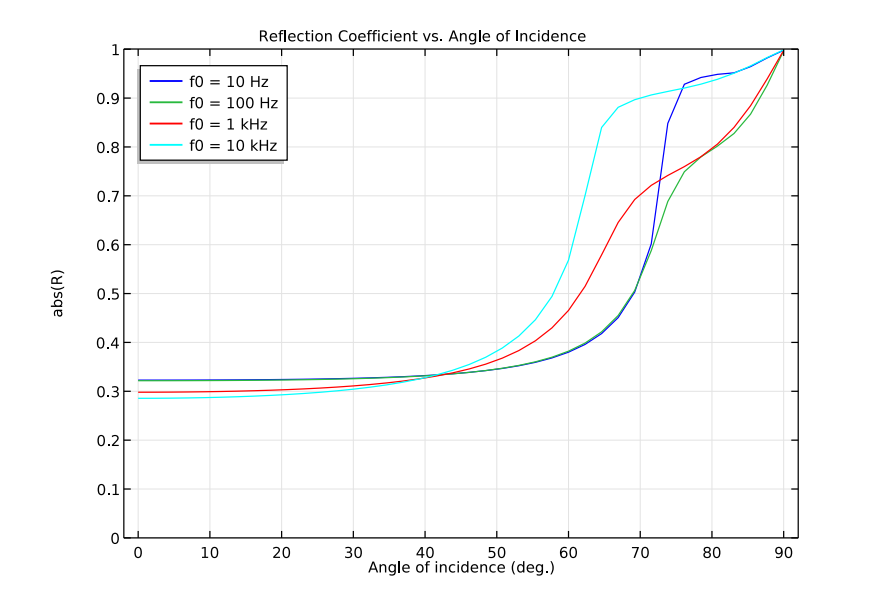
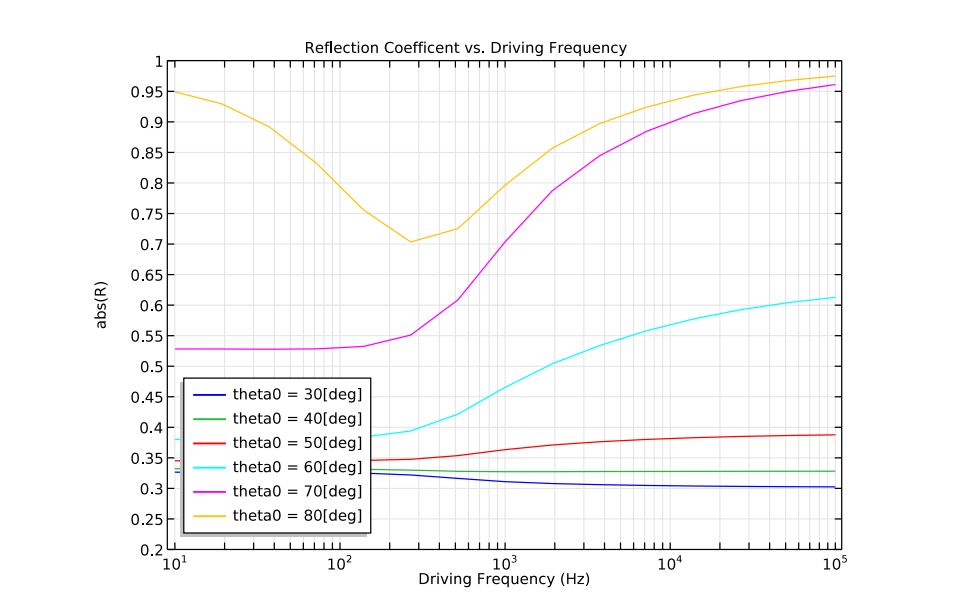


Comments (0)